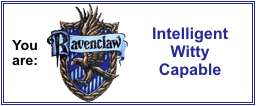 Thieves of Baghdad - One Marine’s Passion for Ancient Civilizations and the Journey to Recover the World’s Greatest Stolen Treasures
Thieves of Baghdad - One Marine’s Passion for Ancient Civilizations and the Journey to Recover the World’s Greatest Stolen Treasuresby Matthew Bogdanos
Bloomsbury Publishing 2005
This has got to go under the Relic Hunters Challenge with a title like that!!!
I thought this book would be dry and academic but NO it turned out to be much more exciting, and so well written that I finished the entire book in 6 straight hours.
Colonel Matthew Bogdanios was in the USMC (United States Marine Corps) reserve. He had a degree in classical studies as well as a law degree. He worked for the District Attorneys office in NYC. He started the book off with a very detailed and exciting description of what he and his family (wife and 3 kids) went through in Manhattan on September 11, 2001. After 9-11 he returned to active duty.
In 2003, the US invaded and occupied Iraq. Shortly after the occupation began, the news began drifting out that the Iraqi National Museum had been looted and that many many treasures were missing. Questions were being asked as to why the US troops had not protected the museum and its treasures.
Matthew dreamed up an idea of how he wanted to help. He wanted to go into Iraq and find those treasures. He loved ancient history, he had a degree in the classics and he had spent several tours in Afghanistan and the middle east so he knew the culture and the region.
First he had to get permission from the top brass and then gather a team together. This he did with alacrity. He had many contacts in the military, customs and immigrations departments and the police.
So in 2003 the Joint Interagency Coordination Group (JIACG) acounter terrorism investigative team combining the miitary, FBI, CIA, Immigrations and Customs enforcement (ICE)and Treasury was set up. Matthew was made Deputy Director.
The primary task was to find evidence of terrorist cells, illegal weapons, terrorist financing and other violations of the UN Security Council resolutions directed at Saddam Hussein.
Matthew describes the day to day details of searching each and every room in the museum, looking for booby traps that may be have been left behind, locating some treasures still in storage and finding other treasures missing, liaising with the Iraqi museum staff and trying to encourage the locals to return what they had stolen, without paying out too much in rewards.
The team were very successful. People started telling them rumours of treasures in hiding. Slowly and surely the treasures were recovered.
One of the biggest treasures tnat Matthew really wanted to find was the Nimrud Jewellery. The rumour was that one of Saddams sons (possibly Uday) had taken the Nimrud jewellery from the Museum some years previously and hidden it with the intention of smuggling the jewllery out of Iraq. He never got the chance.
 Finally after months of searching, Matthews team found the treasures in a box inside a flooded bank vault beneath Iraq's Central Bank in Baghdad. These treasures had been excavated starting in the 1980's from the palace of King Ashurnasirpal II in the ancient Assyrian capital of Nimrud, in northern Iraq. These antiquities date to the 8th and 9th century B.C.
Finally after months of searching, Matthews team found the treasures in a box inside a flooded bank vault beneath Iraq's Central Bank in Baghdad. These treasures had been excavated starting in the 1980's from the palace of King Ashurnasirpal II in the ancient Assyrian capital of Nimrud, in northern Iraq. These antiquities date to the 8th and 9th century B.C. Matthew and his team were responsible for recovering approximately 5,500 artifacts from humanity's earliest civilizations. They also exposed the link between the black market art world and terrorist funding.
Here are some of those exqusite pieces in detail.














No comments:
Post a Comment